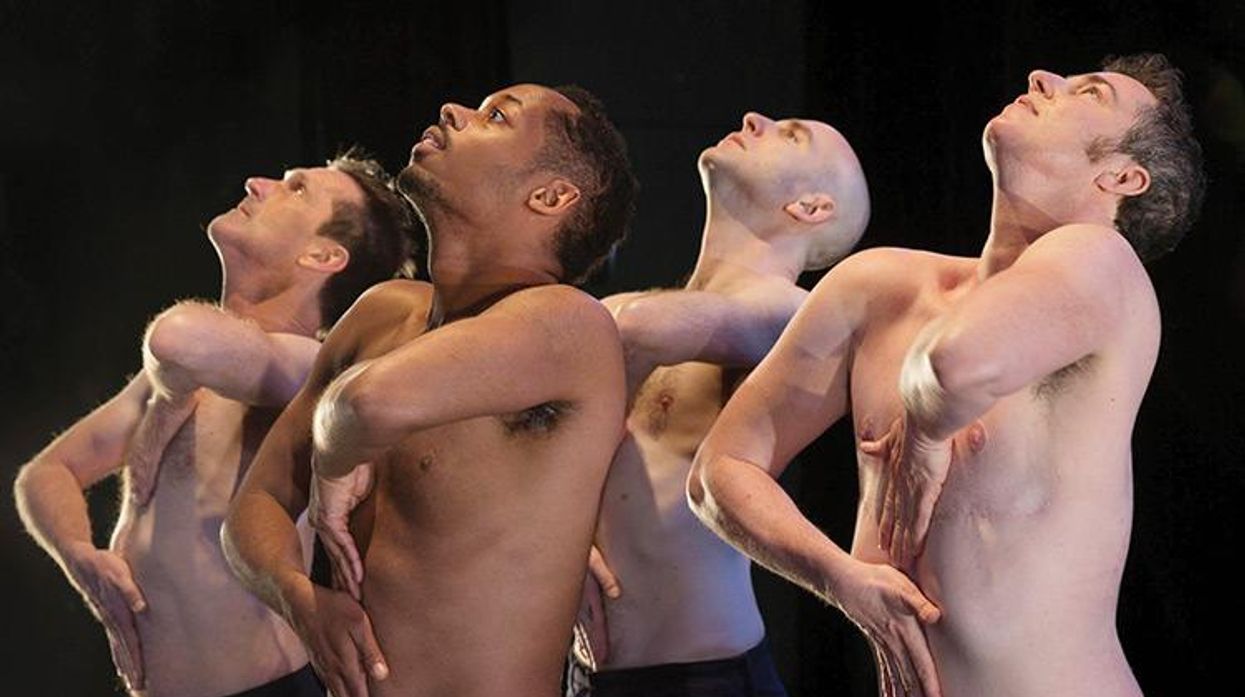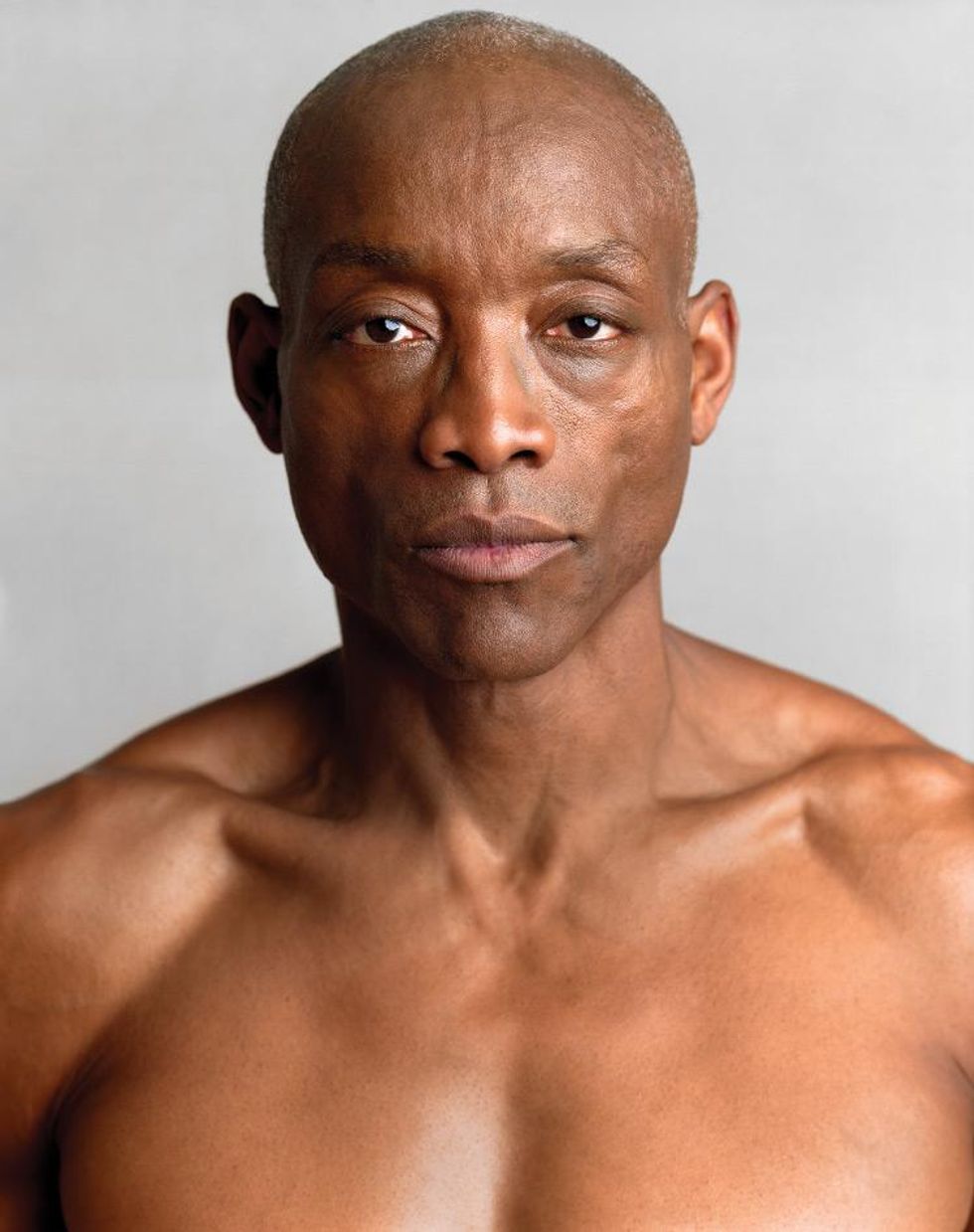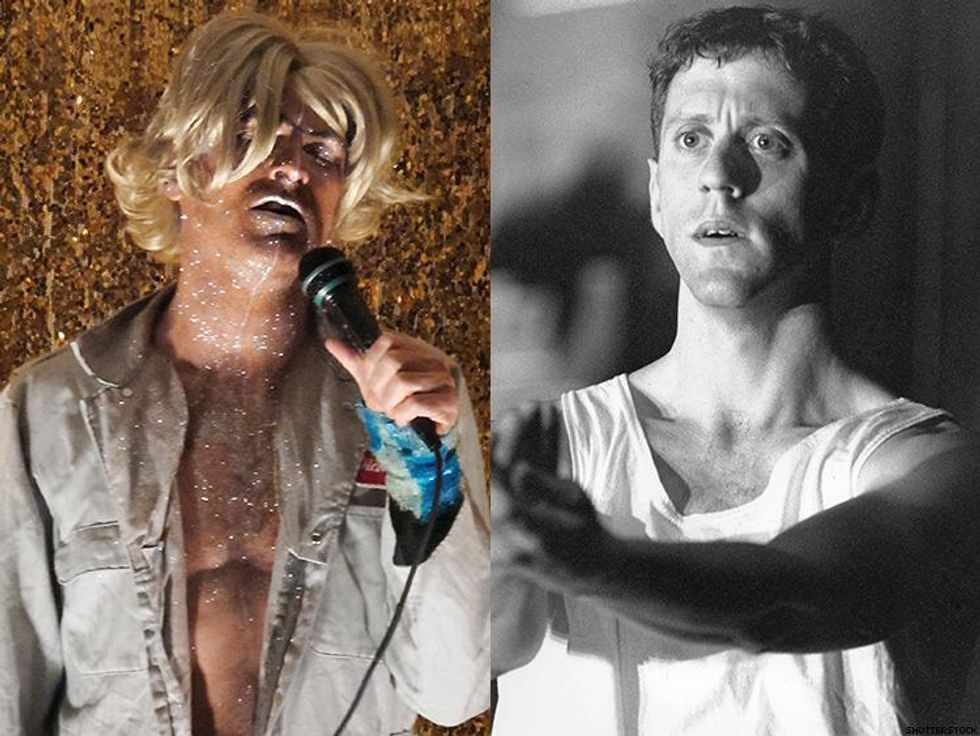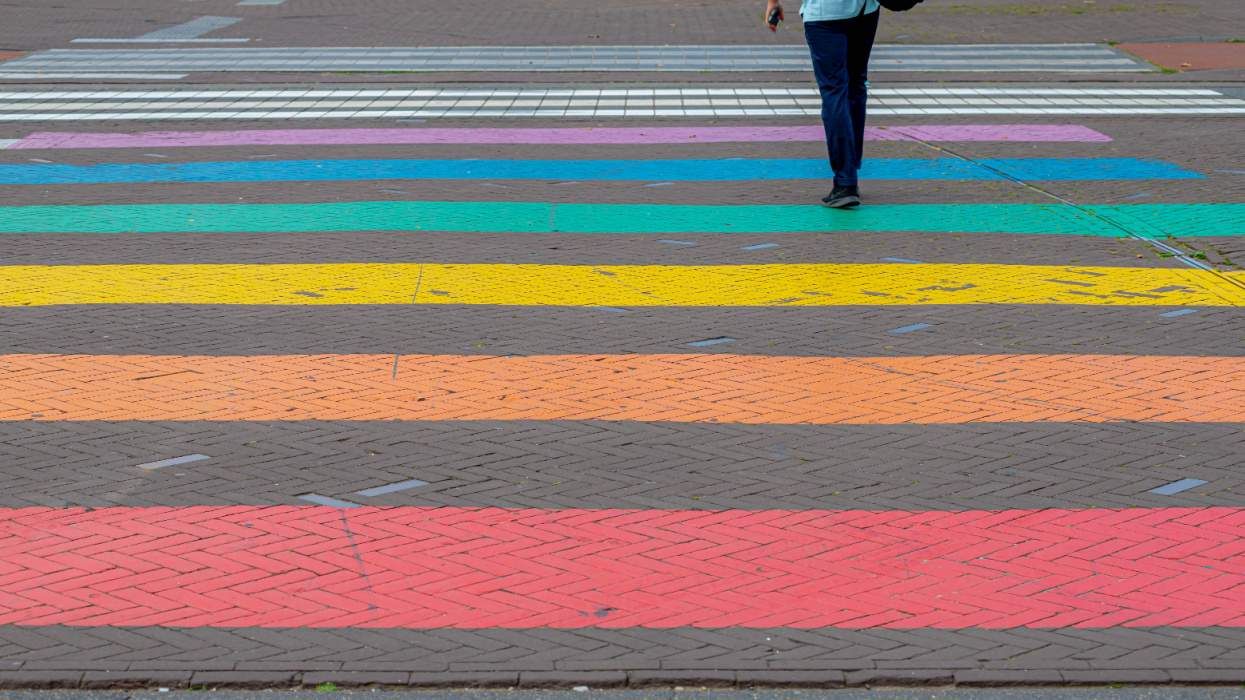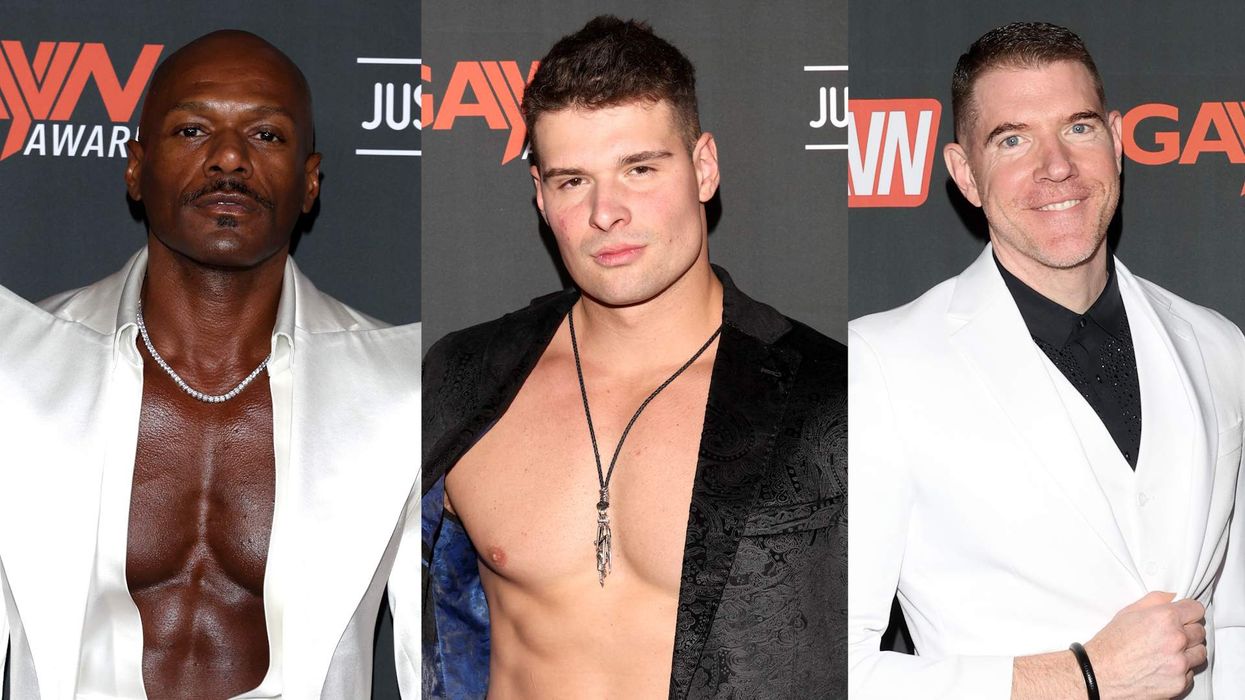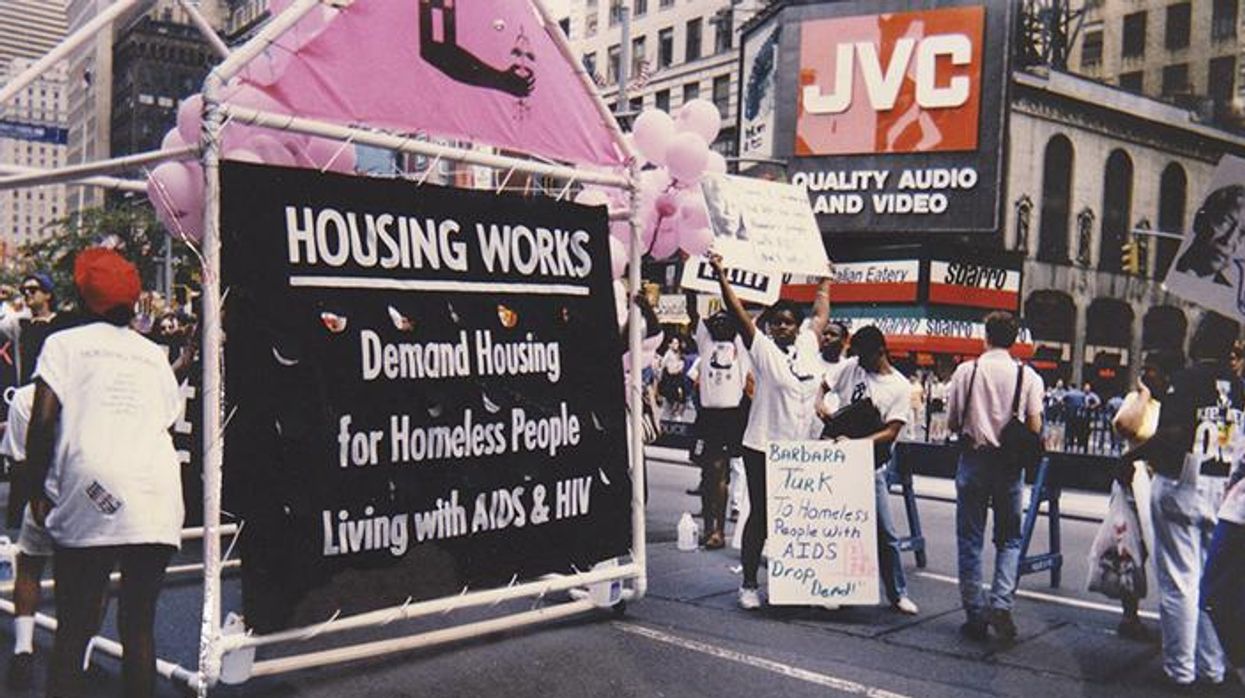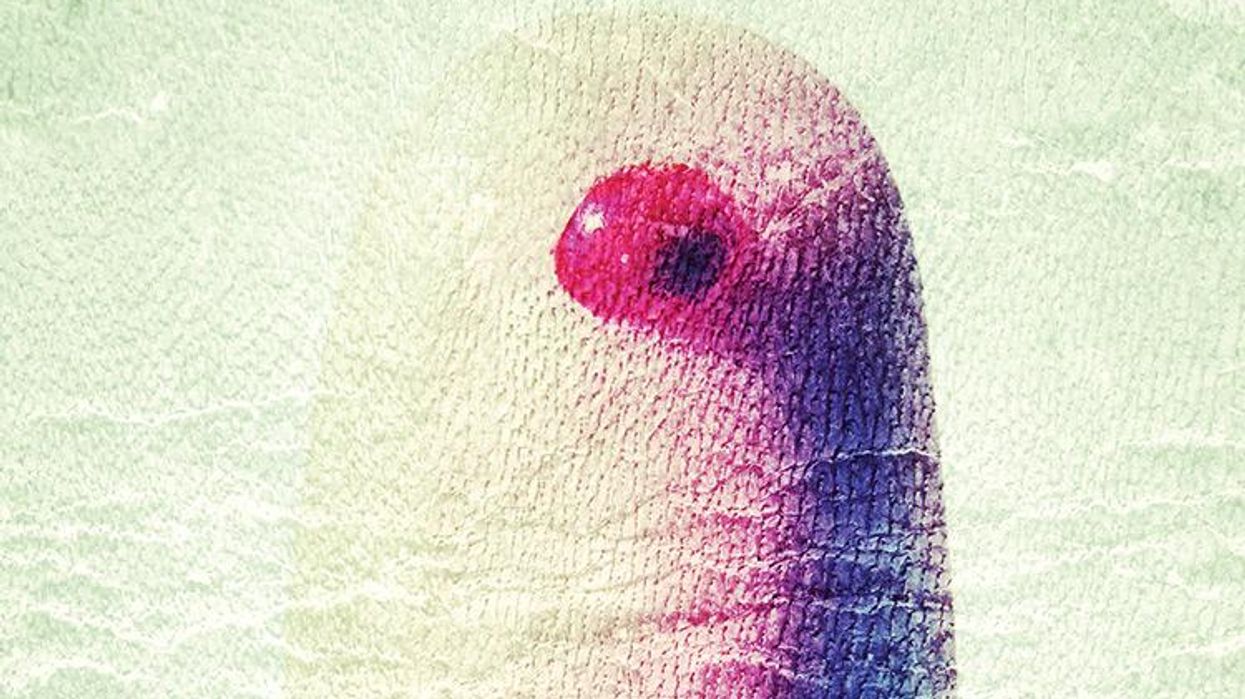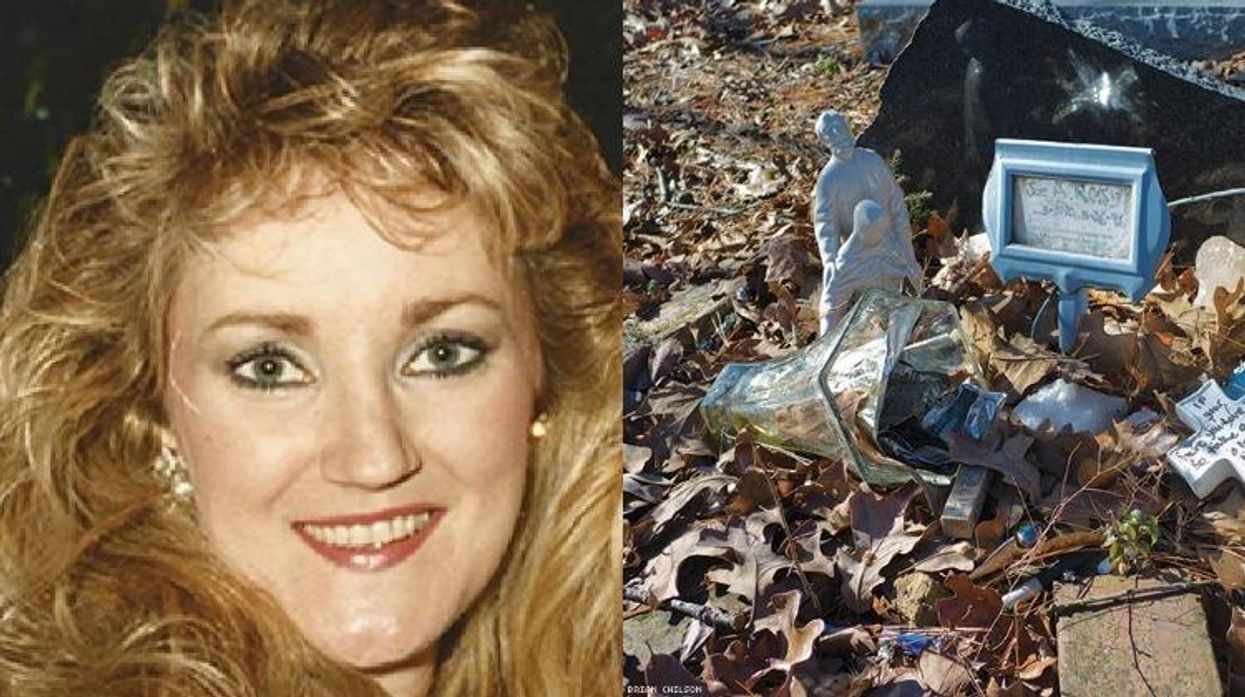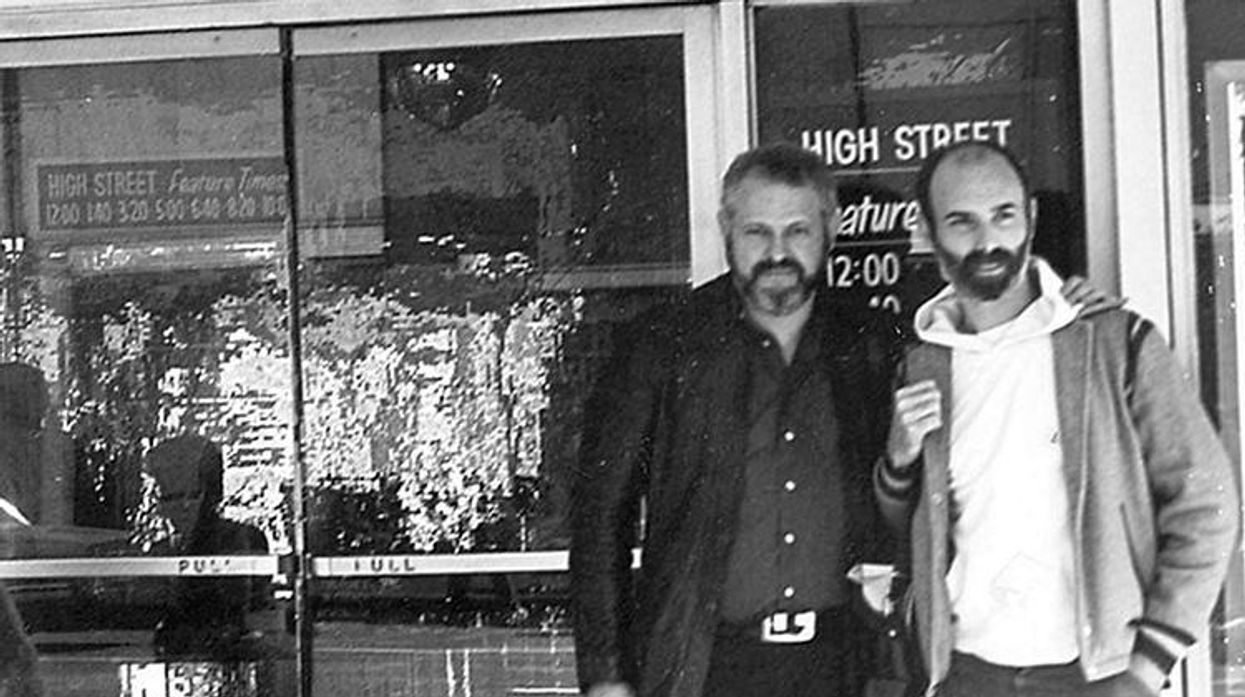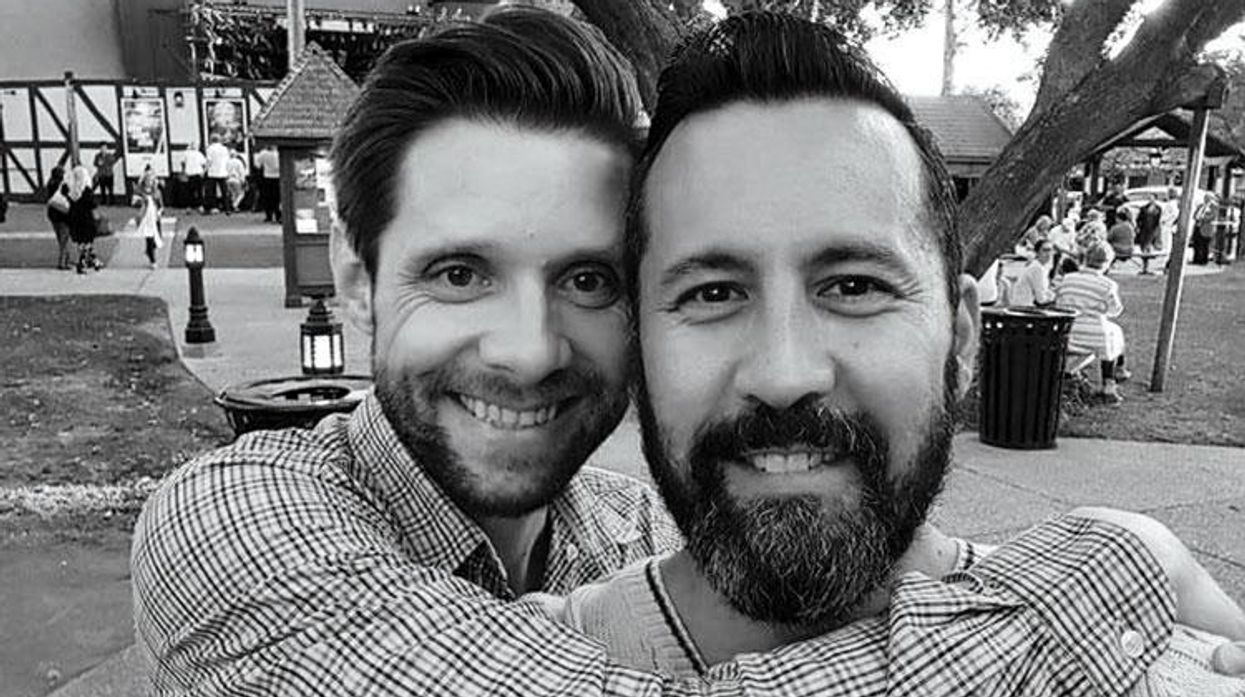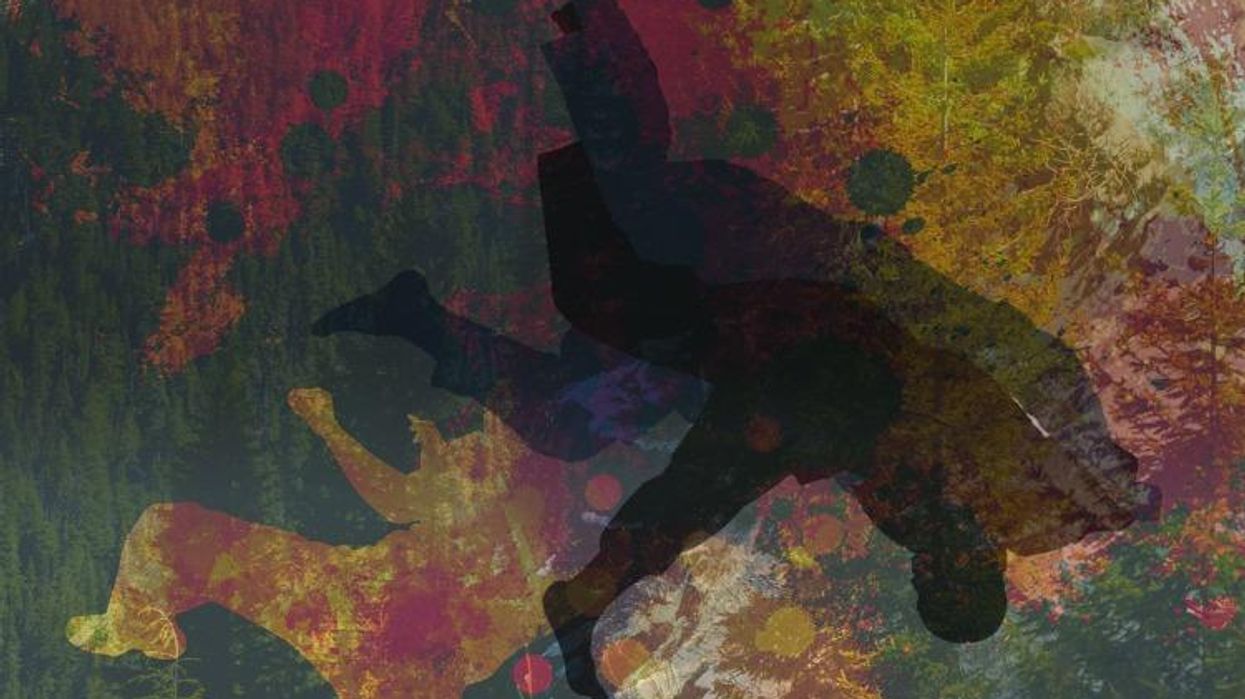There's a famous dance photo from the 1930s of choreographer Ted Shawn's all-male dance company: airborne and shirtless, arms stretched overhead, bodies arched in an elegant curve. Shawn, then already famous for his pioneering partnership with Ruth St. Denis (his wife, from whom he was separated), formed the troupe to prove that dance could be masculine, not just for sissies. In other words, hedging his heterosexual bets while he and some dancers were pairing up romantically. Half a century later, that jubilant photo, a snapshot of virility, was used on a flyer to advertise a more somber, urgent gathering on January 13, 1986, at P.S. 122 in New York called "Dancing for Our Lives! A Dance Benefit in Support of Persons with A.I.D.S." When it was re-appropriated, the gay men of the modern dance world were much more publicly open about their love, but had a very different relationship to their bodies.
The flyer was designed by Tim Miller, who, five years earlier, had performed an intimate duet with his then-boyfriend, John Bernd, a prominent downtown artist, in which Bernd casually listed his physical ailments. Until he died in 1988, at the age of 35, Bernd, like many of his friends, wrestled with AIDS onstage through dance, meditating on life, publicly preparing for death, making a performance of his deteriorating body. Bernd was a focal point of a six-week series, produced last fall by Danspace Project, called Lost and Found, named after one of his works. It featured more than 80 artists who grappled with the impact of AIDS on the dance community; a San Francisco version took place in January.
There are many reasons gay men are so strongly associated with dance. Some have to do with tired stereotypes, some with a welcoming creative community where it's easy to be out. Despite their focus on sterilizing the image of the male dancer, Ted Shawn and His Men Dancers used dance to create a safe space to express their sexuality as well, an impulse that has persisted (and no doubt played a part in my own attraction to modern dance as a still-closeted college student). Though rarely admitted in public, dance is closely and inevitably linked to sex and sexuality. It's the art form of the body--it can't escape it.
So when AIDS visibly attacked the body and blindly targeted gay men, it also visibly attacked and blindly targeted dance.
But dance, precisely because it can't escape its corporeal core, was uniquely equipped to respond. True, it doesn't have the reach of a play, a book, or a film--dance's impact is deeper than it is wide, both more symbolic and more literal.
But because the body cannot hide in dance, it became the vessel for a kind of physical truth. Those who performed with AIDS visibly wore the effects of the disease on their skin and forced audiences to look. At the same time, a dancing body, however weak, is also a body in motion. It is alive. Dancers with AIDS, for as long as they were able, faced impending death with an insistence on demonstrating life, offering a portrait of stubborn dignity.
Photo courtesy Lydia Daniller (The Missing Generation)
In that period, even if a work's subject was abstract, it was about bodies and therefore it could be about AIDS. Take Bill T. Jones's gorgeous 1989 work D-Man in the Waters, named in honor of Demian Acquavella, a member of his company sick from AIDS. (A year earlier, Jones had lost his longtime partner and collaborator, Arnie Zane, to AIDS complications). Though Acquavella could barely walk, Jones carried him onstage at the premiere to perform the choreographed arm gestures, turning a plotless dance into a poignant illustration of the fight--individual and communal--to stay afloat. Dance has a special way of conveying struggle with grace, and grace is a valuable virtue in scary times. Though death hovered over nearly every dance performance in the '80s and early '90s, dance's intrinsic ethereality could serve as a soothing antidote.
Of course, many choreographers weren't interested in pretty. Anger, desperation, and despair fed dance as much as they did other arts. Some artists used dance as a form of activism and social critique. In 1986, Ishmael Houston-Jones, a curator of the recent Lost and Found series, presented an incendiary work with the writer Dennis Cooper responding to AIDS called Them, which culminated in Houston-Jones wrestling with an animal carcass. In 1994, Neil Greenberg created Not-About-AIDS-Dance, which, despite its title, faced AIDS head-on by incorporating a simulacrum of Greenberg's comatose brother, the prominent AIDS activist Jon Greenberg, days before he died. Via projections on the wall, Neil revealed his own HIV-positive status and listed the names of recently deceased friends.
Photo courtesy Johan Elbers (Greenberg)
In 1989 in San Francisco, Keith Hennessy presented Saliva, in which he solicited spit from the audience and then rubbed it on his naked body. Touch was taboo then.
Even when scientists determined that HIV could not be transmitted by spit or sweat, bodily fluids were seen as toxic, which made Saliva positively radical. But less overtly subversive works carried the whiff of risk, too, because even the demurest of ballets produce sweat. To share the stage with a male dancer (gay by assumption), to tangle with him, to perspire with him, was to defy the disease's stigmas and debunk the fear of contact. No other art could do this quite as bluntly.
So dance, by its nature, became a social statement, a political act, a demonstration of trust. And likewise, political acts became dance: In his 2004 book How to Make Dances in an Epidemic, which chronicles the dance community's response to AIDS artistically and organizationally, critic David Gere examines the choreographic influence on public protests.
Which is not to say that the entire dance world immediately and vocally confronted AIDS, even when key figures were affected by it. At his 1989 funeral, the official cause of Alvin Ailey's death was said to be a blood disease; in 1993, when famed ballet dancer Rudolf Nureyev succumbed to AIDS, he still had not publicly acknowledged his illness. But by and large, the dance community rallied around its members. More recently, artists have made efforts to document those dark days, in projects like Lost and Found, feature films like 2013's Test, and works like The Missing Generation, by the San Francisco-based trans choreographer Sean Dorsey, who spent years researching and interviewing AIDS survivors. That work has been touring the country for two years.
And every summer for the past two decades, dancers from the country's top ballet and modern dance troupes, as well as tap stars, Broadway gypsies, and more, perform at the annual Fire Island Dance Festival against a marbling sky as the sun dunks in the bay. The fundraiser is produced by Dancers Responding to AIDS, which was founded in 1991 by members of the Paul Taylor Dance Company and is now part of Broadway Cares/Equity Fights AIDS. (This year's Fire Island Dance Festival is July 14-16; DRA's Hudson Valley Dance Festival is October 7). Many audience members on Fire Island lived through the worst of the AIDS crisis, while many of the dancers are too young to know its horrors, or the mentors they might
have had.
In recent years, these dances have become more optimistic, celebrating LGBT progress. But AIDS lingers. The performances, freed from the confines of stuffy proscenium stages, feel particularly poignant out there in the open, salty air, at home in a place that has long been a refuge for the gay community, as well as a constant reminder of our communal trauma. The shows always sell out, and still the audience is populated by ghosts.
Like what you see here? Subscribe and be the first to receive the latest issue of Out. Subscribe to print here and receive a complimentary digital subscription.


